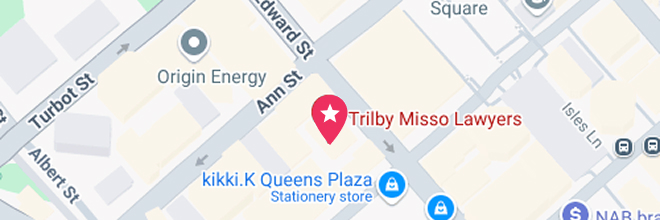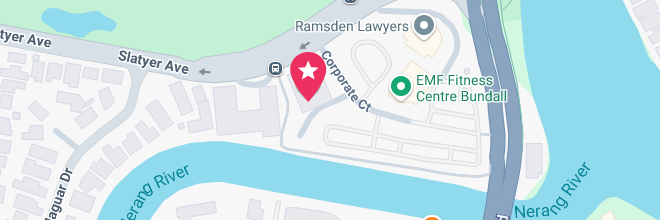Our Brisbane CBD Office
- Suite 400, Level 4/288 Edward St, Brisbane City QLD 4000
- (07) 3910 5470




In Queensland, strict legal deadlines apply when it comes to personal injury claims. These are known as limitation periods—set timeframes within which a claim must be started. If these deadlines are missed, your right to pursue compensation may be permanently lost.
A limitation period is the maximum time allowed to start court proceedings after a personal injury occurs. In most cases, the general rule under Queensland’s Limitation of Actions Act 1974 is:
⚖️ 3 years from the date of injury — this is the time limit to commence court proceedings for adults.
If you do not file your claim within this three-year period, your matter will become statute-barred, meaning the defendant can lawfully object and the court may reject your claim entirely.
It’s important to understand that you may need to notify the insurer or responsible party much earlier than the three-year mark. Most personal injury claims in Queensland require initial paperwork to be lodged within months of the incident—even earlier if a lawyer is involved.
These early steps are critical. Not only do they alert the insurer of your claim, but they also preserve your right to sue later if needed. Each type of claim—motor vehicle, WorkCover, or public liability—has its own early notice requirements, which are explained in the sections below.
If you’ve been injured in a motor vehicle accident in Queensland, you may be entitled to compensation under the Compulsory Third Party (CTP) insurance scheme. This includes drivers, passengers, pedestrians, cyclists, and even children involved in a crash.
But strict time limits apply—and missing a deadline could mean losing your right to claim.
| Action | Deadline |
|---|---|
| Notice to CTP insurer (Form) | Within 9 months of the accident, or 1 month after first seeing a lawyer (whichever comes first) |
| Notice to Nominal Defendant (unidentified/uninsured driver) | Within 3 months of the accident |
| Final court deadline | 3 years from the date of the accident |
| For children | 3 years from the child’s 18th birthday (i.e. up to age 21) |
Under the Motor Accident Insurance Act 1994, you must send a Notice of Accident Claim Form to the at-fault driver’s CTP insurer:
This must be done within 9 months of the crash;
Or, within 1 month of first consulting a lawyer—whichever comes first.
If you miss this, you must provide a reasonable excuse for the delay.
If the at-fault vehicle was unregistered or unidentified (e.g. a hit-and-run), notify the Nominal Defendant within 3 months. If you delay longer than 9 months without a valid excuse, you may lose the right to claim altogether.
If your claim hasn’t settled out of court, you must commence legal proceedings within 3 years of the accident date. After this point, the claim becomes statute-barred unless exceptional circumstances apply.
Different rules apply if the injured person is under 18:
The 3-year limitation period does not start until their 18th birthday.
This means they generally have until their 21st birthday to commence proceedings.
A parent or guardian can (and should) lodge the claim earlier to avoid complications or lost evidence.
Don’t wait. Lodge your claim well before any deadline. The earlier you act, the easier it is to gather evidence, contact witnesses, and allow insurers to properly assess the claim. If you’re unsure which insurer to notify, a personal injury lawyer can guide you.
If you’ve been injured at work in Queensland, your claim will generally fall under the Workers’ Compensation and Rehabilitation Act 2003. Time limits vary depending on whether you’re making a statutory WorkCover claim or a common law claim for damages.
Knowing the difference—and the deadlines—is critical.
Statutory WorkCover Claim
A no-fault claim to cover medical costs and lost wages.
Common Law (Negligence) Claim
A lawsuit for damages if your employer’s negligence caused your injury.
| Claim Type | Deadline |
|---|---|
| WorkCover Statutory Claim | 6 months from the date of injury or becoming aware of it |
| Common Law Negligence Claim | 3 years from the date of injury |
| Child injured at work | 3-year limit begins at age 18 (until age 21 to sue) |
You must lodge a WorkCover application within 6 months from when:
The injury occurred; or
You became aware it was work-related.
WorkCover may accept a late application if you have a valid excuse (e.g. delayed diagnosis), but acceptance is not guaranteed. Late lodgement can affect your entitlements, so report the injury to your employer promptly and lodge the claim as early as possible.
If your workplace injury was caused by employer negligence, you may be eligible to pursue a common law claim for damages. This is separate from your WorkCover benefits.
You must:
First obtain a Notice of Assessment from WorkCover;
Then lodge a Notice of Claim for Damages; and
Start court proceedings within 3 years of the date of injury.
Even if your WorkCover benefits are ongoing, the 3-year clock doesn’t pause. You must preserve your rights within the timeframe.
If a minor (under 18) is injured in a workplace:
The 3-year limit to sue begins when they turn 18.
They then have until their 21st birthday to bring a common law claim.
However, a parent or guardian can lodge a WorkCover claim or notice on their behalf sooner.
Even if you’re receiving WorkCover benefits, don’t wait to explore your common law rights. Many no win, no fee lawyers handle workplace injury claims and can help you understand your next steps before deadlines pass.
If you’re injured in a public place, rental property, private business, or due to medical treatment, your claim will likely fall under the Personal Injuries Proceedings Act 2002 (PIPA). These claims include:
Slips, trips or falls in shopping centres, footpaths or private property
Dog attacks
Faulty products
Injuries in rental properties
Medical negligence (e.g. surgical errors, misdiagnosis)
PIPA claims have strict notice requirements as well as a three-year limitation period to commence proceedings.
| Action | Deadline |
|---|---|
| Part 1 Notice of Claim | Within 9 months of the incident OR 1 month after first seeing a lawyer (whichever comes first) |
| Initial Notice (for medical negligence) | Same timeframe as above – before Part 1 Notice |
| Part 1 Notice after Initial Notice | Within 12 months of receiving a response to the Initial Notice |
| Court Proceedings | Within 3 years of the injury (for adults) |
| Children | Timeframe starts at 18 – can sue until age 21 |
Before you can sue for a personal injury under PIPA, you must give written notice to the at-fault party. This usually goes to their public liability insurer or legal representative.
You must send a Part 1 Notice of Claim within:
9 months from the injury, OR
1 month after engaging a lawyer – whichever comes first.
If you don’t meet this timeframe, the law allows late notices with a reasonable excuse (e.g. hospitalisation, delayed symptoms, mental health impacts).
⚠️ For medical negligence, you must first send an Initial Notice before your Part 1 Notice. Once the healthcare provider responds, you have 12 months to serve the Part 1 Notice.
Regardless of how long the notice process takes, you must commence court proceedings within 3 years of the date of injury. Negotiations or delays in insurer responses don’t pause this limit.
For minors, the 3-year limitation starts at age 18.
They have until their 21st birthday to sue.
A parent or guardian can serve the Part 1 Notice earlier on their behalf.
PIPA claims are procedural and time-sensitive. Engage a personal injury lawyer early so the correct notices are sent on time. Many personal injury lawyers Brisbane locals work with operate under no win, no fee, so there’s no cost to get advice upfront.
Queensland law recognises that some people—such as children or those with mental incapacity—may not be able to manage their own legal matters. For this reason, special extensions apply to certain limitation periods.
If someone is injured while they are under the age of 18, the three-year limitation period does not begin until they turn 18. This means:
They have until their 21st birthday to commence court proceedings.
This rule applies to all personal injury claims—motor vehicle, WorkCover, public liability, and medical negligence.
A parent or guardian can still commence a claim earlier on the child’s behalf.
A 15-year-old injured in a shopping centre in 2023 can wait until their 18th birthday in 2026 before the 3-year limitation period starts. They will then have until 2029 to bring a court claim.
If a claim is made while the child is still a minor:
All usual notice deadlines still apply (e.g. 9-month PIPA notice, or CTP notice).
The parent or legal guardian must act as a litigation guardian.
The courts must approve any settlement to ensure it is in the child’s best interests.
For adults with a significant mental disability (e.g. acquired brain injury, intellectual disability, psychiatric illness):
The limitation period may be paused (suspended) while they are deemed incapable of managing their affairs.
The clock may only start (or resume) once:
The person regains capacity, or
A court-appointed guardian is able to act on their behalf.
Time extensions exist to protect the rights of vulnerable people.
However, delays can still harm a claim—evidence deteriorates, and insurers may dispute liability over time.
Where possible, parents and guardians are encouraged to act promptly to protect the injured person’s interests.
(Trilby Misso Lawyers does not practice Medical Negligence Compensation)
Here’s a quick-reference guide to the key statutory timeframes for different types of personal injury claims in Queensland, including the rules for children.
| Claim Type | Initial Notice Requirement | Deadline to Start Court Proceedings | Timeframe for Children (Under 18) |
|---|---|---|---|
| Motor Vehicle Accident (CTP claim) | – Notice of Accident Claim Form to CTP insurer within 9 months of the accident OR – 1 month after seeing a lawyer (whichever is earlier) |
3 years from the date of the accident | – Limitation period starts at 18 – Has until age 21 to sue |
| Motor Vehicle – Unidentified/Uninsured Driver (Nominal Defendant) | Notify Nominal Defendant within 3 months (strict) | Same as above – 3 years | Same as above |
| WorkCover (Statutory Claim) | Lodge application with WorkCover within 6 months of injury | N/A (administrative process) | Same 6-month limit applies; guardian can lodge |
| Workplace Injury – Common Law Claim | Lodge Notice of Claim for Damages after Notice of Assessment (ideally well before 3 years) | 3 years from the date of injury | Limitation starts at 18 Has until age 21 to sue |
| Public Liability / PIPA Claim | Part 1 Notice within: – 9 months from the incident, or – 1 month after first instructing a lawyer |
3 years from the incident | Time limit starts at 18 Has until age 21 to sue |
| Medical Negligence | Initial Notice (within same timeframe as above) → Part 1 Notice due within 12 months of provider’s response | 3 years from date of injury or discovery | Timeframe starts at 18 Up to age 21 to sue |
Even though children get extra time, it’s always best for a parent or guardian to act as soon as possible—delays make claims harder to prove and reduce chances of success.
Time limits in Queensland are strict, but there are limited exceptions. If you’ve missed a deadline, don’t assume your claim is over — but act quickly.
If you don’t commence court proceedings within 3 years of the injury, your claim is usually considered statute-barred. This means:
The at-fault party can raise a complete legal defence;
The court will likely dismiss your claim, even if your injuries are serious;
You lose your legal right to seek compensation — except in rare cases.
Yes — but only in exceptional circumstances. Extensions may be granted if:
You didn’t know you were injured until much later (e.g. latent injuries or medical misdiagnosis);
A crucial fact wasn’t discoverable earlier;
The injury was deliberately concealed by another party;
You had a disability (such as mental incapacity) at the time.
Even then, it’s up to the court’s discretion and most late claims are rejected. The legal test is high. As legal sources warn: never assume a court will extend time.
If you missed:
The 9-month or 1-month CTP deadline, or
The PIPA 9-month or 1-month rule,
You should still lodge the notice as soon as possible with a written explanation (a “reasonable excuse”). Common acceptable excuses include:
Ongoing surgery or recovery;
Mental health issues;
Not realising the injury was serious;
Delayed legal advice due to personal circumstances.
Insurers may accept this and let the claim continue — but the 3-year court deadline still applies.
WorkCover QLD can accept late statutory claims if you can show a valid reason for delay. However:
Claims made years late are usually rejected;
You may not receive backdated benefits even if it’s accepted;
Early reporting is still best to protect your rights.
You had a back injury from lifting at work in May 2022 but didn’t realise how serious it was until late 2024. You never told your employer or saw a lawyer. In 2025, you try to claim. A court might allow an extension if medical evidence shows the injury wasn’t diagnosable earlier. But if it was clearly diagnosable in 2022 and you just didn’t act — your claim may be denied entirely.
If you think you’ve missed a time limit, speak to a personal injury lawyer immediately. There may be a narrow pathway to continue your claim — but time is critical. Even a few weeks of delay can make the difference between a valid case and a lost opportunity.
Even though Queensland law allows up to 3 years for most personal injury claims, waiting is rarely in your best interests. Acting early protects your legal rights and improves your chances of success.
Witnesses may forget key details
CCTV footage is often erased after a short period
Physical evidence (like unsafe conditions) may be repaired or removed
Medical records are clearer when obtained closer to the injury date
Early lodgement helps insurers assess your injury and liability properly
Delays can raise suspicion or result in denials
You may access interim payments sooner for treatment or loss of income
Before suing, you must complete compulsory notice steps (under MAIA or PIPA)
These can take months to progress
Leaving things too late can force rushed legal action or risk missing the 3-year cut-off
Courts only grant deadline extensions in exceptional cases
Most late claims are rejected outright
Relying on discretion is risky and not recommended
Someone injured in a public place in January 2023 waits until late 2025 to get advice. They miss the notice deadline and are weeks away from the 3-year limit. Their lawyer now has minimal time to investigate, serve notice, and prepare court documents. Even with a strong case, the delay could result in refusal or under-settlement due to time pressure.
In most cases, you have 3 years from the date of injury to commence court proceedings.
Yes — statutory WorkCover claims must be lodged within 6 months of the injury, while common law claims follow the general 3-year rule.
You have 3 years from the date of the accident to commence court action, but you must also lodge a CTP Notice of Claim within 9 months, or 1 month after seeing a lawyer — whichever is earlier.
Children have until their 21st birthday to commence a claim, as the 3-year period starts when they turn 18.
You must notify the Nominal Defendant within 9 months of the accident, or your claim could be refused.
Yes, but you must provide a reasonable excuse if you missed the PIPA notice deadline of 9 months or 1 month after consulting a lawyer.
Not necessarily — lodging notice and commencing court action are separate steps. You still need to file a court claim within 3 years if the matter doesn’t settle.
Only in rare and exceptional cases. Courts rarely grant extensions unless there’s a very strong reason for the delay.
Yes, possibly. WorkCover QLD may accept late claims if you have a reasonable excuse for the delay, but it’s always best to apply within the 6-month window.
Your claim may become statute-barred, meaning you lose your legal right to compensation. Courts only grant extensions in exceptional circumstances, so act early.
For official information on time limits and personal injury law in Queensland, see:
Queensland Law Handbook – Time Limits for Personal Injuries
https://queenslandlawhandbook.org.au/the-queensland-law-handbook/personal-injuries/time-limits/
WorkCover Queensland – Work-Related Injury or Illness Claims
https://www.worksafe.qld.gov.au/claims-and-insurance/make-a-claim/work-related-injury-or-illness
Queensland Courts – Civil Claims Process Overview
https://www.courts.qld.gov.au/going-to-court/civil-matters/claims-procedure
https://www.worksafe.qld.gov.au/claims-and-insurance/compensation-claims/make-a-claim
Find Trilby Misso Lawyers on Facebook, Instagram and YouTube.

Kathryn is Trilby Misso’s Chief Executive Officer.
Meet KathrynUse this simple online tool and find out if you have a claim in less than thirty seconds. You can choose to remain anonymous.
Your next step is a small one. All you need to do is give us a call on 07 3910 5470 or complete this form here to arrange a quick chat.
During this initial conversation, we will:

We understand that taking legal action can be stressful, and we’ll do all we can to ease your concerns.
The chat can take place at our place, your place, or by phone. There is no cost, no pressure, and no obligation.
Call 07 3910 5470 or fill out this form, and we’ll get back to you within 2 hours (during business hours). We look forward to meeting you.
enquire now